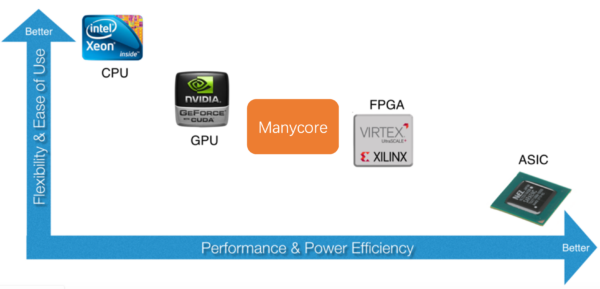Advantages of FPGAs Over Microprocessors
Advantages of FPGAs Over Microprocessors
FPGAs (Field Programmable Gate Arrays) and microprocessors are both types of digital electronic components, but they have different architectures and are suited to different types of applications. Here are some advantages of FPGAs over microprocessors:
-
Parallel Processing: FPGAs are designed to perform multiple operations in parallel, which makes them faster than microprocessors for certain types of applications. While microprocessors execute instructions sequentially, FPGAs can perform many operations simultaneously, which is particularly useful for applications that require high-speed data processing or real-time signal processing.
-
Customizability: FPGAs are highly customizable, allowing users to design custom logic circuits and interfaces for specific applications. In contrast, microprocessors are designed for general-purpose computing and typically require additional hardware components to interface with specialized devices or sensors.
-
Low Power Consumption: FPGAs can be designed to consume very low amounts of power, making them ideal for battery-powered applications or devices that need to operate in remote or inaccessible locations. Microprocessors, on the other hand, consume more power due to their sequential processing architecture.
-
High Reliability: FPGAs are less susceptible to software bugs and security vulnerabilities than microprocessors, which can be vulnerable to viruses, malware, and other attacks. This is because FPGAs are configured using hardware descriptions, which are less prone to coding errors and other types of software-related issues.
-
Real-Time Processing: FPGAs are designed for real-time processing applications, where data processing needs to be done in real-time without delays. Microprocessors, on the other hand, are not optimized for real-time processing and can experience delays due to the nature of their sequential processing architecture.
Relationship between system flexibility and processing performance in specific applications. Positioning of general purpose CPU, GPU, ASIC accelerators and FPGA. From https://hacarus.com/tech/20201207-amd-acquires-xilinx/
Comparison between flexibility and performance of CPU, GPU, FPGA dan ASIC. From: https://www.cs.cornell.edu/courses/cs6120/2022sp/blog/chlorophyll/
Illustration from “Lowest-Power Multi Core RISC-V SoC FPGAs“. Microchip has a comparison of its own microprocessors and FPGAs.

The EEMBC CoreMark-Pro benchmark graph clearly demonstrates the power-efficient nature of the PolarFire SoC FPGA. Leveraging the proven and renowned PolarFire FPGA architecture, the PolarFire SoC delivers exceptional performance with up to 50% lower power consumption than similar FPGAs. Remarkably, the PolarFire SoC FPGA consumes just 1.3W while delivering an impressive 6,500 CoreMarks, outperforming competing SoC FPGAs that deliver no CoreMarks. Moreover, at 8,000 CoreMarks, PolarFire SoC FPGAs consume 55% less power than competing FPGAs. The PolarFire SoC FPGA’s power efficiency combined with its exceptional performance, makes it a go-to choice for power-sensitive applications that demand high performance.
In summary, FPGAs are faster, highly customizable, consume less power, more reliable, and well suited for real-time processing applications compared to microprocessors. However, FPGAs are generally more expensive and require specialized knowledge and tools for programming and configuration. The choice between FPGA and microprocessor will depend on the specific requirements and constraints of the application.

